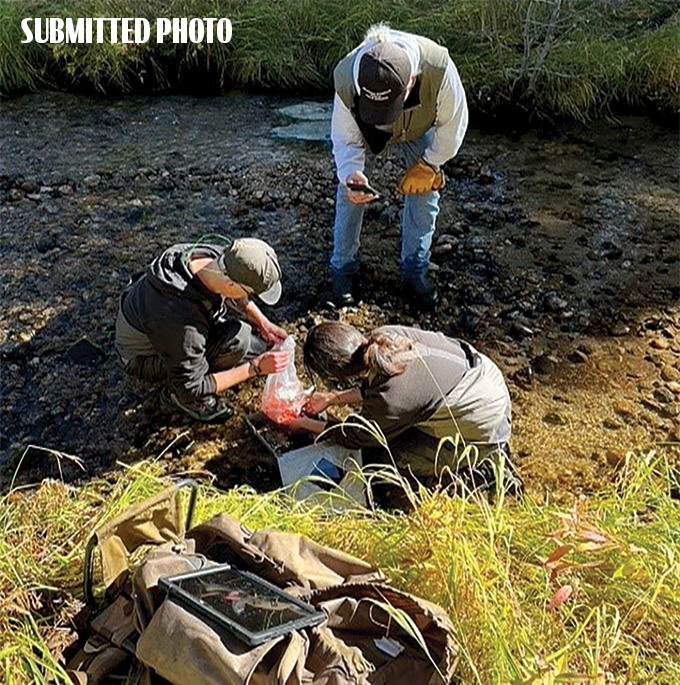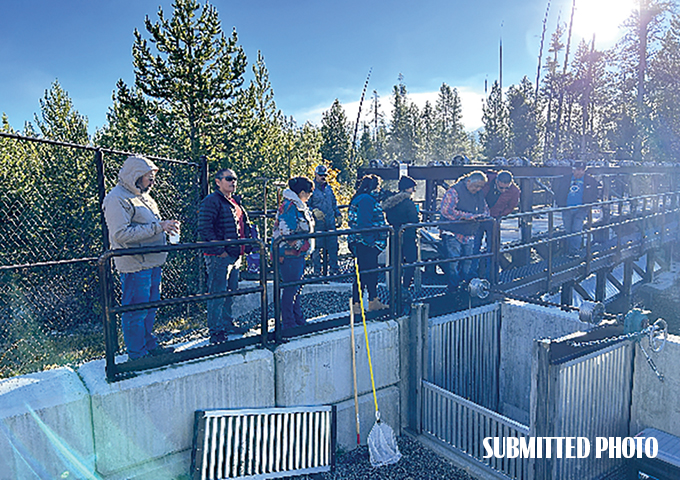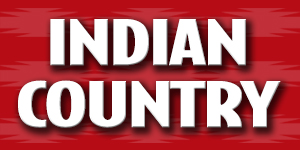FHBC visits Salmon River Basin to support Fish & Wildlife efforts

Fish & Wildlife staff members at Fir Creek in Bear Valley.
By ECHO MARSHALL
Tribal Public Affairs
SALMON — Members of the Fort Hall Business Council (FHBC) recently traveled to the Salmon River Basin for a four-day visit to learn about current Fish and Wildlife projects.
The FHBC has dual responsibility as the Fish and Game Commission. Chairman Lee Juan Tyler, Vice Chairwoman Donna Thompson, Treasurer Ladd Edmo, Secretary Claudia Washakie and council member Sammy Matsaw Jr. all participated in the tour.
“We thank the Fish and Wildlife staff for their tireless effort and commitment to our fisheries. The staff make a lot of sacrifices season after season and spend a lot of time away from their families,” said Matsaw Jr.
The tour began at the South Fork Weir Trap Satellite Facility of the McCall Hatchery, a Lower Snake River Compensation Plan (LSRCP) facility. Nate Weise, LSRCP Coordinator and Lytle Denny, Program Manager led the discussion. Later joined Josh Jackson, field biologist, and crew members transporting and adding Chinook salmon eggs into eggboxes in Cabin Creek. Chairman Tyler offered a prayer for the salmon eggs to be protected on their journey as adult salmon and all of the hands that make their journey possible.

Fort Hall Business Council members visit the Petit Lake weir during their 4-day visit to
various areas on the Salmon River Basin.
They then traveled to Fir Creek where the Bear Valley Project is stationed. Scotty Cazier led a walk-through of the juvenile salmon processing trailer. Kurt Tardy, Program Manager and Rebecca Croy, harvest biologist discussed the aims and objectives of monitoring wild Chinook salmon in the basin. Next, they were off to the Sawtooth Fish Hatchery where they were briefed on the mass processing of juvenile salmon tagged for five days.
Day three, the group visited Petit Lake weir and trap south of Stanley in the Upper Salmon River basin. Tardy and Croy explained the weir purpose and how well it works to account for sockeye salmon.
They then traveled back to Stanley to discuss the Yankee Fork River weir and trap stationed at Pole Flat Campground. They moved to Pond Series projects to discuss habitat restoration work that has been completed over past decades. At the Bonanza habitat restoration site, Bart Gammet, U.S. Forest Service biologist provided an overview. He explained that much of the destruction from the dredge mining has been removed, allowing the river to move across the once buried watershed through collaborations led by the Tribes.
On the way to the East Fork Salmon River (EFSR) weir and steelhead trap they visited Fish and Wildlife workstations at the Clayton and EFSR houses. Denny provided a project overview of steelhead trapping and shared a vision for the Tribes to begin a Chinook program in the future. They then visited Little Boulder campground where Nolan Brown, LCPD staff member, installed a kiosk speaking to the Tribes’ presence hunting salmon.
On the final day of the trip, the council traveled to the Pahsimeroi house, a station utilized by the Tribes’ Fish and Game. Lastly, they visited the Moyer facility where Steve Campbell, Program Manager and Boyd Bouwes, a contractor discussed the habitat restoration projects in Panther Creek.
The FHBC traveled over 900 miles on the four days visiting with staff. The FHBC looks forward to providing regular updates to the membership regarding their efforts as the Fish and Game Commission.





